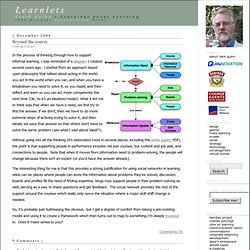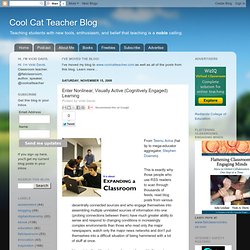

Training. Beyond the course. Beyond the course In the process of thinking through how to support informal learning, I was reminded of a diagram I created several years ago.

I started from an approach based upon philosophy that talked about acting in the world: you act in the world when you can, and when you have a breakdown you need to solve it, so you repair, and then reflect and learn so you can act more competently the next time (Ok, so it’s an idealized model). What it led me to think was that when we have a need, we first try to find the answer. If we don’t, then we have to do more extreme steps of actively trying to solve it, and then ideally we save that answer so that others don’t have to solve the same problem (see what I said about ‘ideal’?). Without going into all the thinking (it’s elaborated more in several places, including this white paper; PDF), the point is that supporting people in performance includes not just courses, but content and job aids, and connections to people.
Enter Nonlinear, Visually Active (Cognitively Engaged) Learning. From Teemu Arina (hat tip to mega-educator aggregator, Stephen Downes) This is exactly why those people who use RSS readers to scan through thousands of feeds, read blog posts from various decentrally connected sources and who engage themselves into assembling multiple unrelated sources of information into one (probing connections between them) have much greater ability to sense and respond to changing conditions in increasingly complex environments than those who read only the major newspapers, watch only the major news networks and don’t put themselves into a difficult situation of being hammered with a lot of stuff at once.

Linear, intentional learning was how you learned in the past.